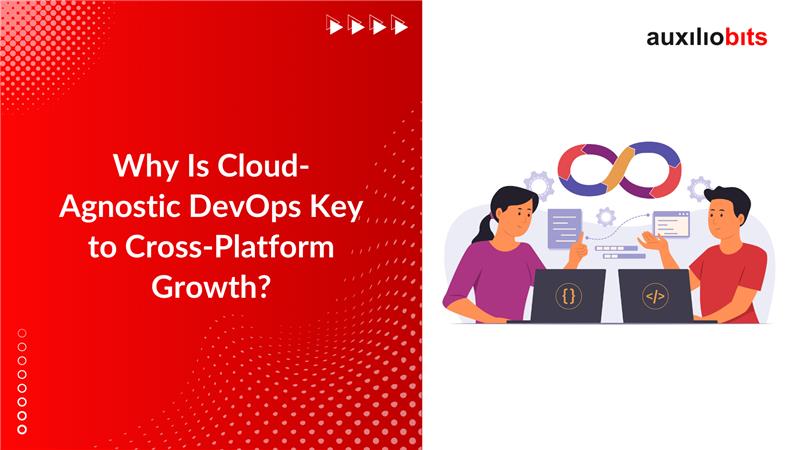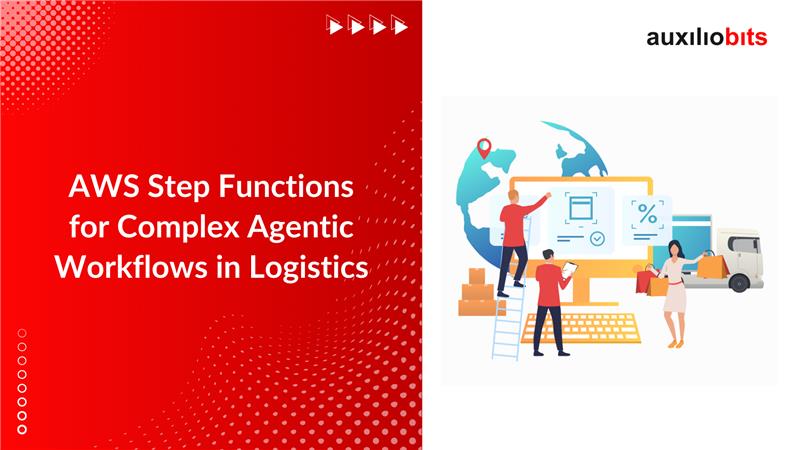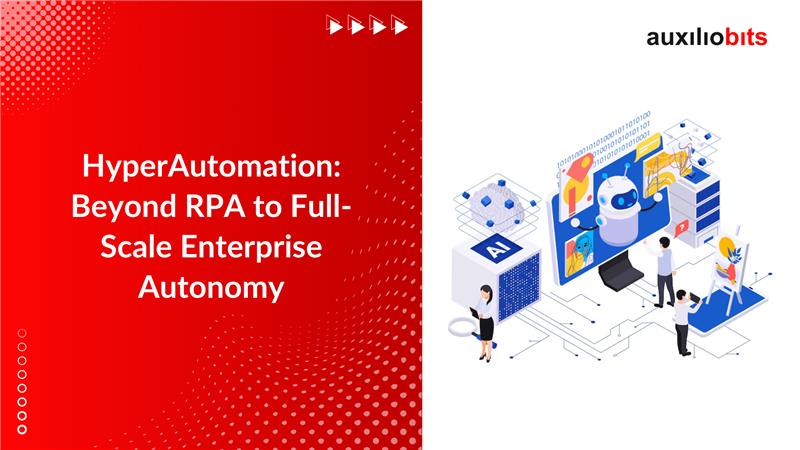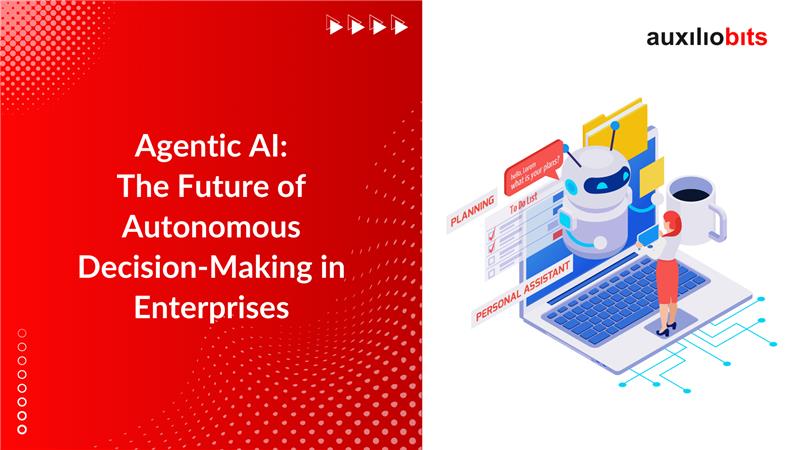
Picture a world where all your apps are not confined to a single cloud provider. It moves seamlessly across various platforms, adapting to changing requirements without interruption. Sounds like a dream, right? Well, all of this is possible because of cloud-agnostic DevOps. Companies still juggling through multiple cloud platforms to access certain perks are unfamiliar with the fact that managing apps is daunting. Cloud-agnostic DevOps provides a suitable solution by eliminating vendor lock-in constraints. It helps businesses build, deploy, and manage apps with Kubernetes and IaC platforms. This ensures that workloads are optimized for performance regardless of where they run.
Now, let’s discuss the advantages businesses can enjoy through cloud-agnostic DevOps. Companies obtain operational resilience because they can distribute workloads across clouds, which lessens downtime and ensures disaster recovery. In addition, cost management becomes efficient as companies select budget-friendly environments for specific tasks. Moreover, performance optimization becomes feasible and effortless with apps running closer to end-users, lessening latency and implementing a cloud-agnostic approach that requires the right tools. For example, Kubernetes can be used to orchestrate containers. On the other hand, Terraform is the right tool for developing infrastructure. Prometheus is the best tool for gaining real-time performance.
Also explore: Using Generative AI to Improve Data Quality and Transformation in Snowflake
What is Cloud-Agnostic DevOps?
Cloud-agnostic DevOps allows companies to build, deploy, and manage applications across multiple platforms without relying on a single cloud provider. Unlike conventional cloud solutions, cloud0agnostic deveOps uses IaC and containerization to promote flexibility without depending on a single cloud provider.
Here are some of the reasons why choosing Cloud-agnostics is your best bet:
1. Avoid Vendor Lock-In
Vendor lock-in can occur when businesses rely solely on one cloud provider, making it challenging to migrate to other platforms. If you are utilizing cloud-agnostic DevOps, it is guaranteed that such issues won’t arise. Cloud-agnostic will use technologies like Kubernetes to help firms containerize apps. This way, the apps will run on any infrastructure.
2. Cost Optimization
Cloud-agnostic DevOps can save you money by allowing you to choose a cloud provider that fits your budget. Assess your needs, then research and compare pricing models, discounts, and incentives from different providers. Negotiate with your chosen provider, and if you cannot reach a suitable agreement, explore other options until you find the best fit.
3. Resilience and Business Continuity
Cloud-agnostic DevOps also brings resilience to the table. Cloud service providers may occasionally experience disruptions due to equipment failures, technical issues, or cyberattacks. With cloud-agnostic DevOps, companies can proactively assess these risks and create robust disaster recovery plans. Additionally, it enables them to establish backup capabilities, ensuring they are well-prepared in case of unforeseen events. This level of reliability guarantees that businesses can maintain operations even when faced with challenges.
4. Flexibility and Agility
Cloud-agnostic DevOps allows teams to build applications using various tools and services from different cloud providers. This approach enables developers to select the best-managed services, databases, and AI/ML tools that meet their specific application requirements without being limited by the offerings of a single cloud vendor. This flexibility accelerates innovation by enabling companies to test and deploy applications faster. Additionally, teams can adopt a hybrid cloud approach to maintain compliance, utilizing public and private clouds for sensitive workloads.
5. Global Reach and Low Latency
Cloud-agnostic DevOps benefits businesses with a global audience by enabling the use of geographically distributed data centers from multiple cloud providers. This allows applications to be deployed closer to end-users, reducing latency, faster response times, and improved user experiences, leading to greater customer satisfaction. Additionally, compliance with regional data regulations is simplified, as businesses can select providers with data centers in specific regions to meet legal requirements.
Key Components of Cloud-Agnostic DevOps
Cloud-agnostic DevOps, which uses standardized tools and methodologies, allows applications to be portable, scalable, and resilient across multiple cloud platforms. This will enable organizations to operate seamlessly without depending on a specific vendor. The key components of cloud-agnostic DevOps are discussed in more detail below.
1. Infrastructure as Code (IaC)
Cloud-agnostic DevOps relies heavily on infrastructure such as code (IaC), which uses machine-readable configuration files to manage and provision cloud infrastructure. This process replaces manual processes. Popular IaC tools like Terraform and Pulumi enable consistent infrastructure description, deployment, and maintenance across various cloud environments.
- Consistency and Repeatability: IaC ensures that infrastructure setups remain identical across clouds, reducing configuration drift and deployment errors.
- Scalability: Applications can be scaled up or down easily by modifying configuration files.
- Version Control: Infrastructure code can be stored in repositories, enabling version tracking and rollback.
2. Containerization
Containerization tools like Docker and Kubernetes are essential for cloud-agnostic DevOps. These tools package applications and their dependencies into portable containers, ensuring consistent performance across diverse environments and resolving compatibility challenges.
- Portability: Containers abstract applications from the underlying infrastructure, ensuring seamless deployment across AWS, Azure, GCP, or on-premises data centers.
- Resource Efficiency: Containers are lightweight and consume fewer resources than traditional virtual machines.
- Scalability and Management: Kubernetes automates container deployment, scaling, and management, providing fault tolerance and high availability.
3. Continuous Integration and Continuous Deployment (CI/CD) Pipelines
Cloud-agnostic DevOps relies on CI/CD pipelines for automated application delivery. Tools such as Jenkins, GitLab CI/CD, and CircleCI enable seamless integration, testing, and deployment of code changes across various cloud platforms.
- Automation: CI/CD pipelines automate repetitive tasks such as code testing, building, and deployment.
- Faster Time to Market: Continuous testing and feedback loops allow teams to identify issues early, accelerating release cycles.
- Multi-Cloud Support: Pipelines can simultaneously deploy applications to different cloud environments, maintaining a uniform deployment process.
4. Monitoring and Observability
Monitoring and observability tools provide real-time insights into application and infrastructure performance. Solutions like Prometheus, Grafana, and Datadog enable organizations to track metrics, logs and traces across diverse cloud environments.
- Unified Visibility: Businesses can monitor applications and infrastructure components from a single platform, reducing the complexity of multi-cloud management.
- Proactive Issue Resolution: Alerts and dashboards notify teams of performance anomalies, ensuring quick resolution.
- Optimization: Detailed analytics help optimize resource utilization, reducing operational costs
5. Configuration Management
Configuration management ensures application and infrastructure settings are consistent across cloud platforms. Tools like Ansible, Chef, and Puppet automate the management of configuration files, reducing manual intervention.
- Standardization: Configuration management tools apply uniform settings across all environments, eliminating discrepancies.
- Compliance: Organizations can enforce security policies and operational standards using pre-defined configurations.
- Rollback Capabilities: Versioned configurations enable quick rollback in case of misconfigurations or failures.
Benefits of Cloud-Agnostic DevOps
Cloud-agnostic DevOps offers many benefits that empower organizations to manage applications across multiple cloud platforms. By eliminating vendor lock-in and enhancing operational agility, businesses can achieve cross-platform growth, reduce costs, and improve overall resilience. Here’s how cloud-agnostic DevOps drives these advantages:
1. Enhanced Flexibility
One of the most significant benefits of cloud-agnostic DevOps is its flexibility. Organizations can deploy and manage workloads across various cloud platforms without being tied to a single vendor. This approach allows businesses to select the best cloud provider for each workload, ensuring optimal performance and cost-efficiency.
Cloud-agnostic applications are often designed using containerization technologies like Docker and Kubernetes, making them portable across clouds. Organizations can switch providers or adopt a multi-cloud strategy without refactoring code, providing agility in responding to market demands or regulatory changes.
2. Faster Time to Market
Cloud-agnostic DevOps accelerates application delivery by streamlining development and deployment pipelines. Organizations can automate build, test, and deployment processes across multiple environments using cloud-agnostic CI/CD (Continuous Integration and Continuous Deployment) pipelines with tools like Jenkins or GitLab.
This automation reduces manual effort, minimizes human error, and shortens release cycles. Developers can deploy updates faster and respond to customer demands in real-time, providing a competitive advantage.
3. Global Expansion
For enterprises targeting a global audience, cloud-agnostic DevOps provides access to the extensive infrastructure of multiple cloud providers. Businesses can deploy applications in data centers closer to end-users, reducing latency and improving application performance. This ensures a seamless user experience, particularly for latency-sensitive applications like video streaming, gaming, or financial transactions. Additionally, storing and processing data in specific geographic locations simplifies compliance with regional regulations and meets legal requirements.
Implementing Cloud-Agnostic DevOps
To implement cloud-agnostic DevOps, you need to follow some essential steps. Below are them:
Step 1: Design a Multi-Cloud Architecture
- Identify cloud services best suited for your needs.
- Choose regions and availability zones for deployment.
- Ensure interoperability with containerization tools like Kubernetes.
Step 2: Use Infrastructure as Code (IaC)
- Tools like Terraform, Pulumi, and AWS CloudFormation help manage infrastructure consistently.
- Maintain version control for infrastructure configurations.
Step 3: Containerization and Orchestration
- Package applications using Docker containers.
- Deploy and manage containers with Kubernetes for seamless orchestration.
Step 4: Build Cloud-Agnostic CI/CD Pipelines
- Implement Jenkins, GitLab CI/CD, or GitHub Actions for automated pipelines.
- Configure pipelines to deploy applications across multiple platforms.
Step 5: Centralized Monitoring and Logging
- Use Prometheus and Grafana for metrics monitoring.
- Implement centralized logging with ELK (Elasticsearch, Logstash, Kibana).
Step 6: Ensure Security and Compliance
- Implement role-based access control (RBAC).
- Utilize tools like HashiCorp Vault to manage your credentials securely.
- Ensure compliance using automated audits and logging.
The Last Thoughts
Cloud-agnostic DevOps is a game-changer for enterprises striving for cross-platform growth. This approach allows businesses to gain flexibility, reduce operational risks, and achieve unparalleled scalability. At Auxiliobits, we specialize in implementing cloud-agnostic DevOps strategies that drive innovation and maximize ROI. Ready to unlock cross-platform growth? Contact us today.






